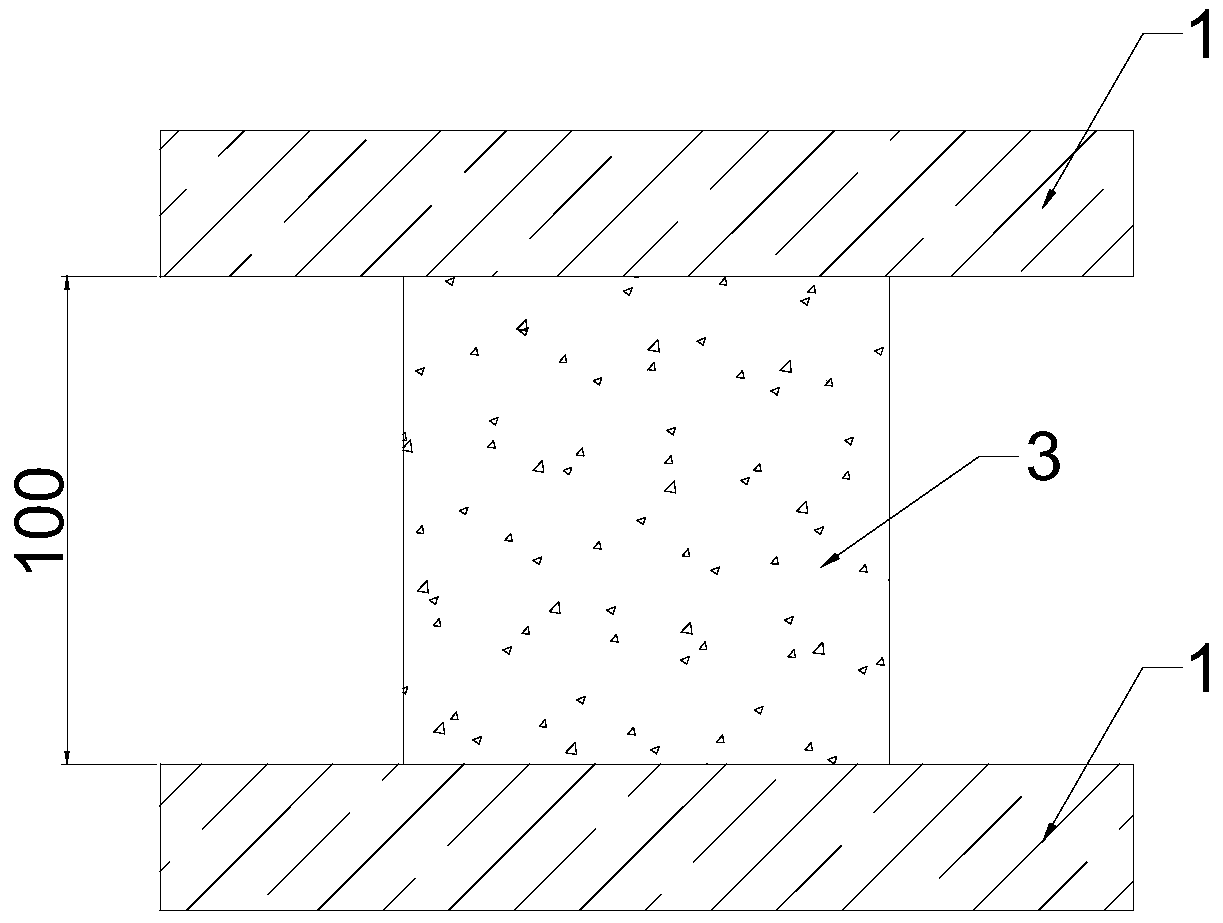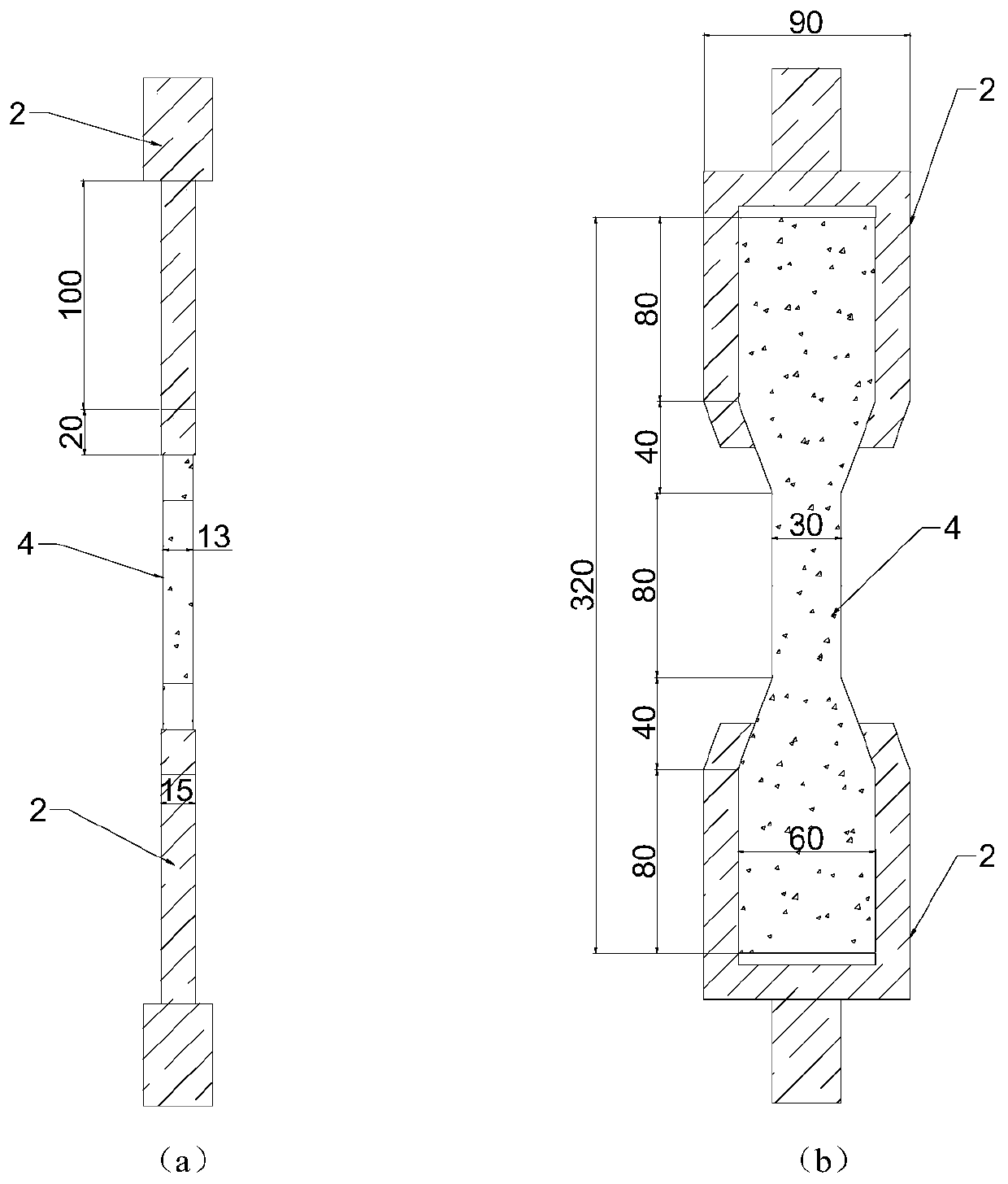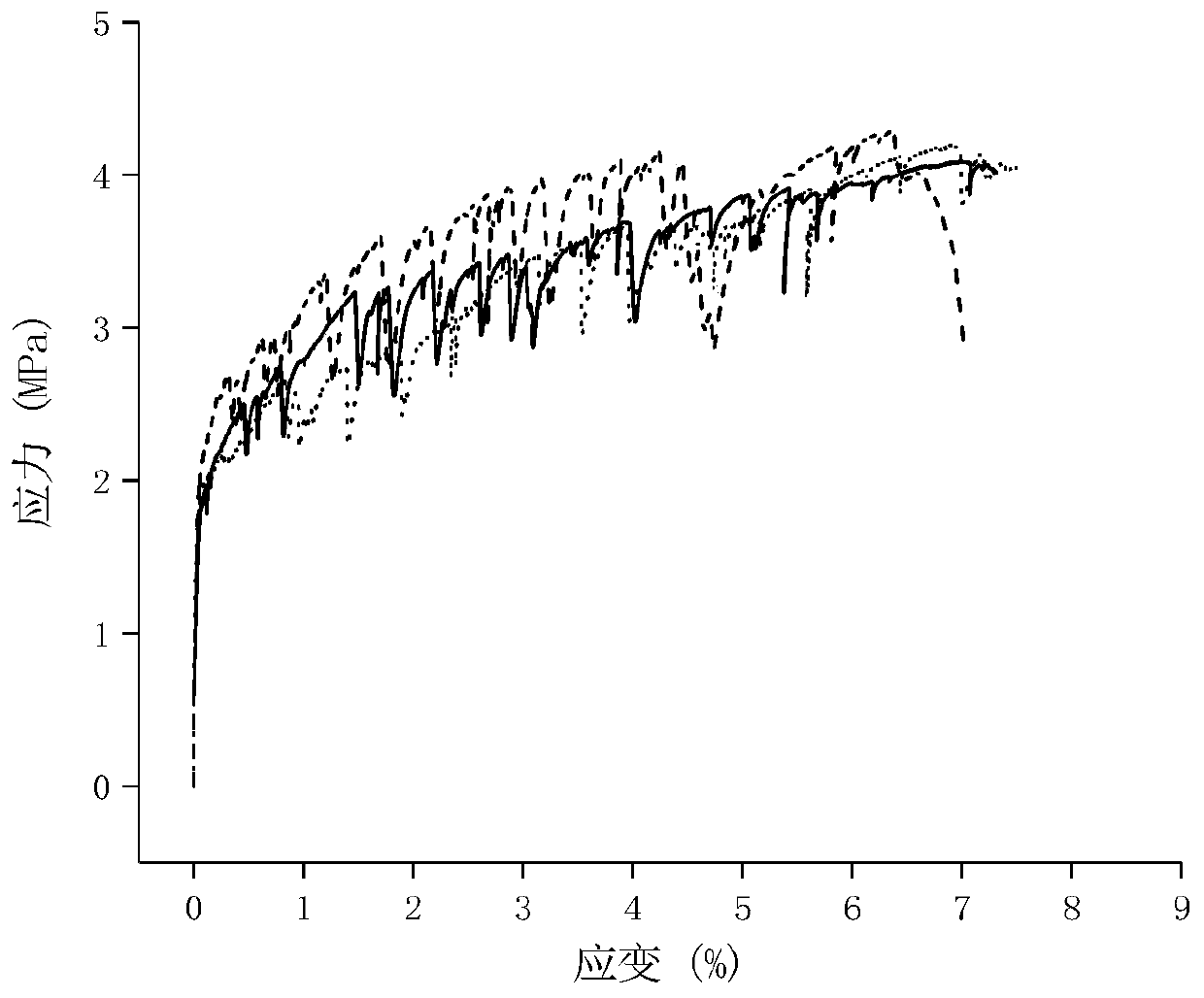Environment-friendly composite building material based on ceramic waste and preparation method thereof
A technology for composite building materials and ceramic wastes, applied in the field of environment-friendly composite building materials and their preparation, can solve the problems of high production energy consumption, poor deformation ability, low tensile strength, etc., so as to improve recycling and avoid fiber knots. The effect of reducing the amount of cement
- Summary
- Abstract
- Description
- Claims
- Application Information
AI Technical Summary
Problems solved by technology
Method used
Image
Examples
Embodiment 1
[0047] An environment-friendly composite building material based on ceramic waste. Calculated by mass percentage, the composition and mass percentage of raw materials in the composite material are: cement: 17.58%; mineral powder: 0%; pottery powder: 0%; quartz sand: 19.34% ; Pottery sand: 0%; water: 20.51%; water reducer: 0.11%; thickener: 0.03%; PVA fiber: 1.41%, the rest is fly ash.
[0048] The above-mentioned preparation method of an environment-friendly composite building material based on ceramic waste, the steps are as follows:
[0049] (1) take raw material by above-mentioned mass ratio;
[0050] (2) Mix cement, fly ash, quartz sand and thickener into the mixer, dry mix at low speed for 2-3 minutes;
[0051] (3) Fully mix the weighed water reducer and water, pour it into the mixer, and stir for 3-4 minutes at low speed;
[0052] (4) Slowly add PVA fiber into the mixer, stir for 2-3 minutes at low speed, and then stir for 1-2 minutes at high speed; the environment-fri...
Embodiment 2
[0058] An environment-friendly composite building material based on ceramic waste, calculated by mass percentage, the composition and mass percentage of raw materials in the composite material are:
[0059] Cement: 17.57%; mineral powder: 0%; pottery powder: 20.50%; quartz sand: 19.33%; pottery sand: 0%; water: 20.50%; water reducing agent: 0.15%; : 1.41%, the rest is fly ash.
[0060] Other implementation content and steps are the same as embodiment 1.
[0061] Table 2 shows the mechanical test results of the test piece obtained in this embodiment. The test piece is cured in a standard way, and the curing period is 28 days.
[0062] Table 2: The mechanical performance test results of the specimens obtained in Example 2
[0063]
Embodiment 3
[0065] An environment-friendly composite building material based on ceramic waste, calculated by mass percentage, the composition and mass percentage of raw materials in the composite material are:
[0066] Cement: 17.57%; fly ash: 0%; mineral powder: 0%; pottery powder: 40.98%; quartz sand: 19.32%; pottery sand: 0%;
[0067] Water: 20.49%; water reducer: 0.20%; thickener: 0.03%; PVA fiber: 1.41%.
[0068] Other implementation content and steps are the same as embodiment 1.
[0069] The mechanical test results of the specimens obtained in this embodiment are shown in Table 3. The specimens were cured in a standard manner, and the curing age was 28 days.
[0070] Table 3: The mechanical performance test results of the specimens obtained in Example 3
[0071]
[0072]
PUM
| Property | Measurement | Unit |
|---|---|---|
| thickness | aaaaa | aaaaa |
| compressive strength | aaaaa | aaaaa |
Abstract
Description
Claims
Application Information
 Login to View More
Login to View More - R&D
- Intellectual Property
- Life Sciences
- Materials
- Tech Scout
- Unparalleled Data Quality
- Higher Quality Content
- 60% Fewer Hallucinations
Browse by: Latest US Patents, China's latest patents, Technical Efficacy Thesaurus, Application Domain, Technology Topic, Popular Technical Reports.
© 2025 PatSnap. All rights reserved.Legal|Privacy policy|Modern Slavery Act Transparency Statement|Sitemap|About US| Contact US: help@patsnap.com



